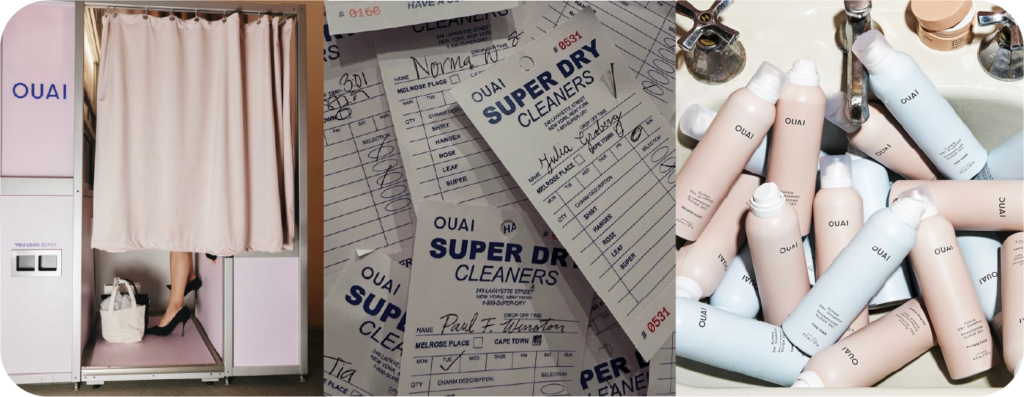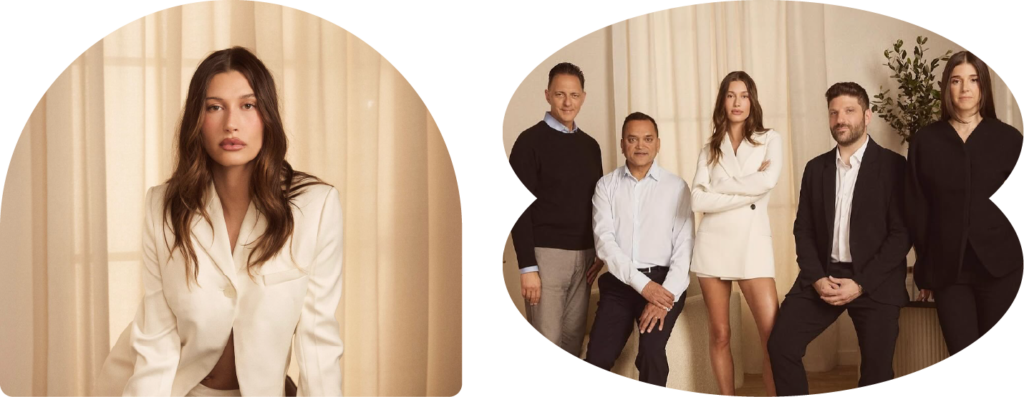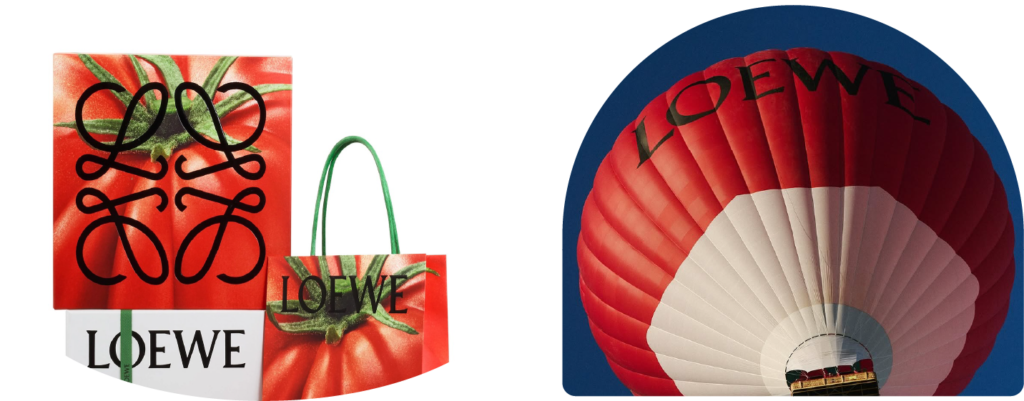Summer’s creeping in. Your brain’s half in strategy mode, half picturing a terrace, an Aperol, and maybe some PTO. We get it. But before you log off, here’s a look at the emotional branding examples that actually made us feel something this month.
While most brands were chasing clicks and churning out content, a few were doing something quieter and smarter.
They were building emotional connection. The kind that makes people stop scrolling. The kind that sells out products. The kind that earns billion-dollar exits.
From nostalgic pop-ups to airborne tomatoes, here’s what made us pause and what your brand can take with you.

💨 OUAI’s Pop-Up as an Emotional Branding Example in Beauty
Dry shampoo. Dry cleaners. One very on-brand collision.
To launch its updated Super Dry Shampoo, OUAI took over a corner of NYC and turned it into a laundromat-themed pop-up, complete with tote bags, Y2K-coded keychains, free samples, and signage that screamed cool girl, circa 2004. It wasn’t just on-theme. It was emotionally spot-on.
Because here’s the thing: everyone knows what dry shampoo really means — that moment when you’re already late, roots unwashed, trying to make “salvaged” hair feel intentional. OUAI didn’t try to reframe that. They just made it iconic.
Why it worked:
It didn’t sell dry shampoo. It sold recognition. OUAI took a beauty emergency and turned it into a collective ritual. You didn’t need to read a headline to understand what the activation meant - you felt it. That’s the power of storytelling through context, not explanation.
👠 Heels Make Deals Take:
Don’t launch a product. Launch a behavior.
When your audience already lives the moment, your job isn’t to sell. It’s to mirror and make it feel iconic.
🔍 Zoom out:
This was one of the clearest emotional branding examples of the season — grounded, clever, and instantly relatable. This wasn’t just decor. It was dramatization. OUAI reminded us that even the most basic product can become a branded lifeline — if you tie it to something your audience already emotionally understands.
Sources: 📌 Check it out on Instagram

💰 Rhode’s $1B Exit: Soft Power Done Right
Like OUAI, Rhode made people feel something, but with intimacy, not nostalgia. There are plenty of celebrity brands. Very few are taken seriously.
In just two years, Rhode went from launch to $1B acquisition. But it wasn’t hype. It wasn’t a stunt. It was brand power — built slowly, clearly, and intimately.
From day one, Hailey Bieber kept Rhode ruthlessly on-message. Milky textures. Glossy finishes. Softness everywhere: in color, in tone, in energy. Rhode didn’t shout. It whispered. And we leaned in.
Then came the acquisition by e.l.f. Beauty — and Hailey’s public letter.
She didn’t just announce the news. She invited us in.
The tone wasn’t corporate. It was personal. Clear. Still brand-aligned. She positioned herself not just as founder, but as Chief Creative Officer and Head of Innovation and reminded everyone: this isn’t just business. This is vision.
Why it worked:
Rhode didn’t just sell skincare. It sold emotional intimacy.The brand felt like a friend you trust. And when that friend grows, you root for her — because she’s kept you close the whole time.
👠 Heels Make Deals Take:
Consistency is charisma.
When every touchpoint tells the same emotional story, you don’t need to push. You pull.
🔍 Zoom out:
Rhode’s clarity and consistency make it one of today’s most effective emotional branding examples, especially in the crowded world of celebrity-led ventures.
Don’t just craft a beautiful product. Craft a worldview. And then speak from the centre of it. Hailey didn’t disappear behind a valuation. She used it to double down on why Rhode exists at all.
And if you want to see how Rhode builds momentum long before launch day, check out our analysis of their Peptide Lip Treatment pre-launch campaign.
Sources: 📌 Read the full letter

🏖 Jacquemus in Monte-Carlo: Summer, Branded to the Bone
Of all the emotional branding examples we saw, while Rhode brought softness and intimacy, Jacquemus gave us escape.
This summer, the brand didn’t drop a lookbook. It dropped a world, by taking over the legendary Monte-Carlo Beach Club. Yellow sunbeds. Striped umbrellas. Dreamy boutiques. The Mediterranean, made tactile.
It wasn’t just a setting. It was sensory branding in 360°.
Menus. Towels. Music. Textiles. All seamlessly extending the vibe of their “La Croisière” collection. And just like that, you weren’t in Monaco anymore, you were in Jacquemusland.
No hashtags screaming for attention. No influencers doing forced walkthroughs. Just a quietly surreal space you wanted to be part of. Summer became a brand experience.
Why it worked:
Jacquemus didn’t describe a lifestyle. He built it. The Monte-Carlo takeover turned passive viewers into dreamers and dreamers into loyalists.
👠 Heels Make Deals Take:
Don’t just campaign. World-build.
When every detail, from the parasol to the playlist, speaks your brand language, you stop competing for clicks. You create belonging.
🔍 Zoom out:
Among recent emotional branding examples, this campaign stood out for how it used setting and sensation, not slogans. Whether you own a beach club or just a landing page, the question is the same: How does your brand feel when people step inside? Because content is momentary. Context is unforgettable.
For a deeper dive into how Jacquemus turns storytelling into strategy, read our full breakdown here.
Sources: 📌 See the campaign

🍅 LOEWE’s Tomato Balloon: Absurd? Yes. Brilliant? Also Yes.
A tomato floating over Cappadocia might sound like a surreal fever dream. But for LOEWE, it was the final note in a year-long symphony of branding — quiet, strange, and completely unforgettable.
It started small.
Tomato-scented candles. A $1,300 tomato clutch. Tomato motifs trickling through campaigns, visuals, and home objects. Then came the tweet:
“This tomato is so LOEWE I can’t explain it.”
Creative director Jonathan Anderson didn’t explain it either.
He leaned in:
“Loewe meme to reality.”
So they took the meme, and made it fly.
A literal hot air balloon, shaped like a tomato, hovering over one of the world’s most iconic landscapes.
Absurd? Yes.
But also: poetic. Romantic. Rooted in something human.
Because that tomato — plump, earthy, imperfect — quietly became a symbol of everything LOEWE was saying through fashion:
A rejection of cold luxury. A return to sensuality. A wink at meme culture. A love letter to slowness and strangeness.
Why it worked:
LOEWE didn’t just use a motif. They romanticised it. They gave it scent. Shape. Scale. Story.
The tomato became a brand language — silly enough to be shared, deep enough to be remembered.
👠 Heels Make Deals Take:
Find your tomato.
Repetition isn’t laziness — it’s world-building. When a symbol shows up again and again (in visuals, in products, in tone), it stops being decoration. It becomes mythology.
🔍 Zoom out:
You don’t need a tomato balloon. But you do need a symbol.
Something that feels true to your brand’s soul — and that you’re brave enough to repeat until it means something.
Sources: 📌 See the campaign
🧭 What Can You Learn from These Emotional Branding Examples ( without $1B)
Not every brand can take over Monte-Carlo or fly a tomato balloon.
But every brand can think smarter — and feel deeper. Start here:
1. Root your campaign in a ritual
OUAI didn’t invent the idea of dry shampoo on a rushed morning. They romanticized it.
💡 Ask: What’s a boring, forgettable moment for your customer — and how can you make it feel iconic?
2. Build with ruthless consistency
Rhode whispered, and the world leaned in. Its voice, visuals, and vibe never broke character.
💡 Try this: If your logo vanished, would your audience still recognize you by the feeling alone?
3. Design a world, not just a product
Jacquemus didn’t market a collection. He built a summer. Every detail: sound, texture, towel — was brand storytelling.
💡 Prompt: If your brand were a hotel room, what song would play when the door opens?
4. Repeat symbols until they become story
LOEWE turned a tomato into mythology. Not because it was trendy — but because it meant something.
💡 Ask: What’s your tomato? What object or motif could you repeat until it becomes yours?
5. Speak like a person, not a pitch
Hailey’s Rhode letter didn’t perform. It connected. That tone builds trust — and moves markets.
💡 Test: Would you say this to someone you care about? Or just to close a deck?
Want more standout emotional branding examples?
Don’t miss our full list of The Smartest Brand Activations of 2025.
💌 Final Thought: You Don’t Need a Balloon. But You Do Need a Story
All four campaigns in this roundup are powerful emotional branding examples — not because they followed a playbook, but because they made us feel before they tried to sell.
You may not have Monte-Carlo money or a fruit-shaped budget. But you do have something to say. And the power to say it with clarity, emotion, and a little weirdness.
Branding that resonates, really resonates, isn’t louder. It’s truer.
So:
✨ Find your tomato.
✨ Show us how it lives in your world.
✨ And repeat it until we believe it too.
Book Your Consultation and let’s make it happen. 👠✨







No comments.